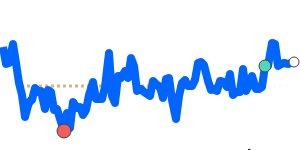The USD to HUF exchange rate has experienced significant volatility influenced by recent developments in both the U.S. and Hungary. Analysts note that the U.S. dollar has faced downward pressure, recently plunging amid concerns over the Federal Reserve's independence and increasing expectations of imminent interest rate cuts. This situation has led the USD to hover at multi-month lows, with recent trading at 329.9 HUF, approximately 3.0% below its three-month average of 340.1 HUF.
Concerns about the Fed and the forthcoming inflation data, particularly the anticipated Consumer Price Index update, are contributing factors to the weakening of the USD. Additionally, ongoing U.S.-China trade tensions and discussions surrounding the Mar-a-Lago Accord, which aims to devalue the dollar, are further complicating the dollar's outlook. The overall sentiment in the markets indicates that if the Federal Reserve goes ahead with rate cuts, the dollar could weaken even more.
On the Hungarian side, the forint is facing its own set of pressures. A rising budget deficit projected at 4.5% of GDP amid sluggish economic growth raises concerns regarding Hungary's fiscal health. The nomination of Finance Minister Mihaly Varga to take over as the central bank governor has triggered apprehensions about potential interest rate cuts that could destabilize the HUF. While public support for euro adoption indicates a desire for stability, the potential negative impact from U.S. tariffs on EU imports could further hurt Hungary's economic growth, particularly in its critical automotive sector.
Together, these factors contribute to a complex backdrop for the USD/HUF exchange rate. Forecasts suggest that the HUF may experience pressure if Hungary's economic outlook worsens, particularly amid discussions of euro adoption amidst the forint's depreciation. As traders and businesses look for stability, close monitoring of the U.S. Federal Reserve's decisions and the Hungarian economic response will be crucial in the coming weeks.

